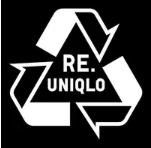31/07/2024
Our mini series on sustainable fashion explores the innovations taking place in the industry, particularly in relation to the materials and how they are being ethically sourced. Trade marks also play their part to shape the sustainable fashion industry. Noise about the problems of fast fashion, waste, energy consumption, chemicals and plastic pollution is getting louder. It is no wonder brands and buzz words associated with sustainability are popping up everywhere. How are companies communicating to the world through their trade marks that their fashion is sustainable? Global trade mark databases around the world provide an insight into the brands which are being protected. These choices give an indication of how the companies consider trade marks in promoting sustainability credentials. They also show how popular marks are now being filed for sustainable materials.
Well-known brands have developed sustainable products, and have adopted new trade marks in light of this. In 2019, Prada announced its Prada Re-Nylon® line with a working of its famous bags made out of ECONYL®. ECONYL®, a regenerated-nylon yarn made from discarded plastic, has been registered as a trade mark by its producer across a number of countries. We see here the use of ‘eco-’ and ‘Re-’, signalling sustainability.
Stella McCartney’s range includes garments made with BioPuff®, a plant-based, feather-free insulating material. BioPuff® is a registered trade mark, owned by a biomaterials company now known as Ponda. The ‘bio’ element of this mark is signalling a link to living things, away from synthetic. Stella McCartney also widely uses a branded material called ‘Mylo’. The message is more subtle here. The fabric is a vegan alternative to leather made using mycelium, a network of fungal threads, which we discussed in our previous blog. In addition, the designer uses a low-impact banana-based fibre called ‘Bananatex’®, and a grape-based vegan product called ‘VEGEA’.

UNIQLO has registered a mark including ‘RE.UNIQLO’ centred within a recognisable recycle symbol shown below. Again, we see the ‘re’ element and use in relation to repairing, remaking or simply donating for resale or redistribution.

Looking at the marks registered for fabrics themselves, as well as clothing and accessories, the companies Never Fully Dressed and jewellery brand Abbott Lyon have sought protection for their own brand names, and ASOS have recently been granted protection for its ASOS logo and for the MISS SELFRIDGE and TOPSHOP brands for goods including “textile fabrics and substitutes for textiles”.
It would be an omission not to mention Patagonia, famous for its promotional efforts in the sustainable field and transparency in its production cycle. This company has a worldwide portfolio with over 900 trade mark registrations, including the marks ‘RECIRCLE’, ‘RESPONSIBLI-TEES’, ‘POLYCYCLE’, ‘THE CLEANEST LINE’, and ‘FREEOPRENE’. They even have a registered trade mark for ‘PATAGONIA WE’RE IN BUSINESS TO SAVE OUR HOME PLANET’ – the message can’t get much clearer than that!
Further exposure of true sustainable materials comes from celebrities promoting or even wearing clothes made from these materials. Nicola Coughlan wore a custom sustainable dress made from TENCELTM fibres at the Barbie premiere. The press reports were clear to include mention of this mark. TENCELTM products are made out of lyocell and modal fibres, all of which are created from raw material wood. TENCELTM has gathered around it over 400 trade mark registrations around the world. In addition, actress Natalie Portman attended LBMH’s Life 360 conference to discuss topics including environmental and social justice, and announced an investment in MycoWorks, a company creating leather from mushrooms. MycoWorks has a number of registered trade marks worldwide including “FINE MYCELIUM” for cell phone cases and bags made of mycelium.
As we have seen, numerous brands in sustainable fashion are adopting trade marks that help to promote sustainability within their brand and filing applications to register these marks. This goes to show that trade marks hold more than just protective value, they are an important way to spread brand awareness linked to a company’s commitment to the sustainability movement and, as such, worth registering. This is why selecting a trade mark is so important. Care should be taken to ensure it is not too descriptive of the good or service that is being sought for protection, otherwise it is going to be a challenge to register and gain protection against others adopting this style of messaging. There is also the danger that what was an indication of origin becomes generic if the industry fails to link it to one originating company and this can damage any trade mark registration secured.
Read the next article of Sustainable Style: Fur, Feathers, Fashion: Is it sustainable?
Read the previous article of Sustainable Style: Leather Alternatives
This article is for general information only. Its content is not a statement of the law on any subject and does not constitute advice. Please contact Reddie & Grose LLP for advice before taking any action in reliance on it.



